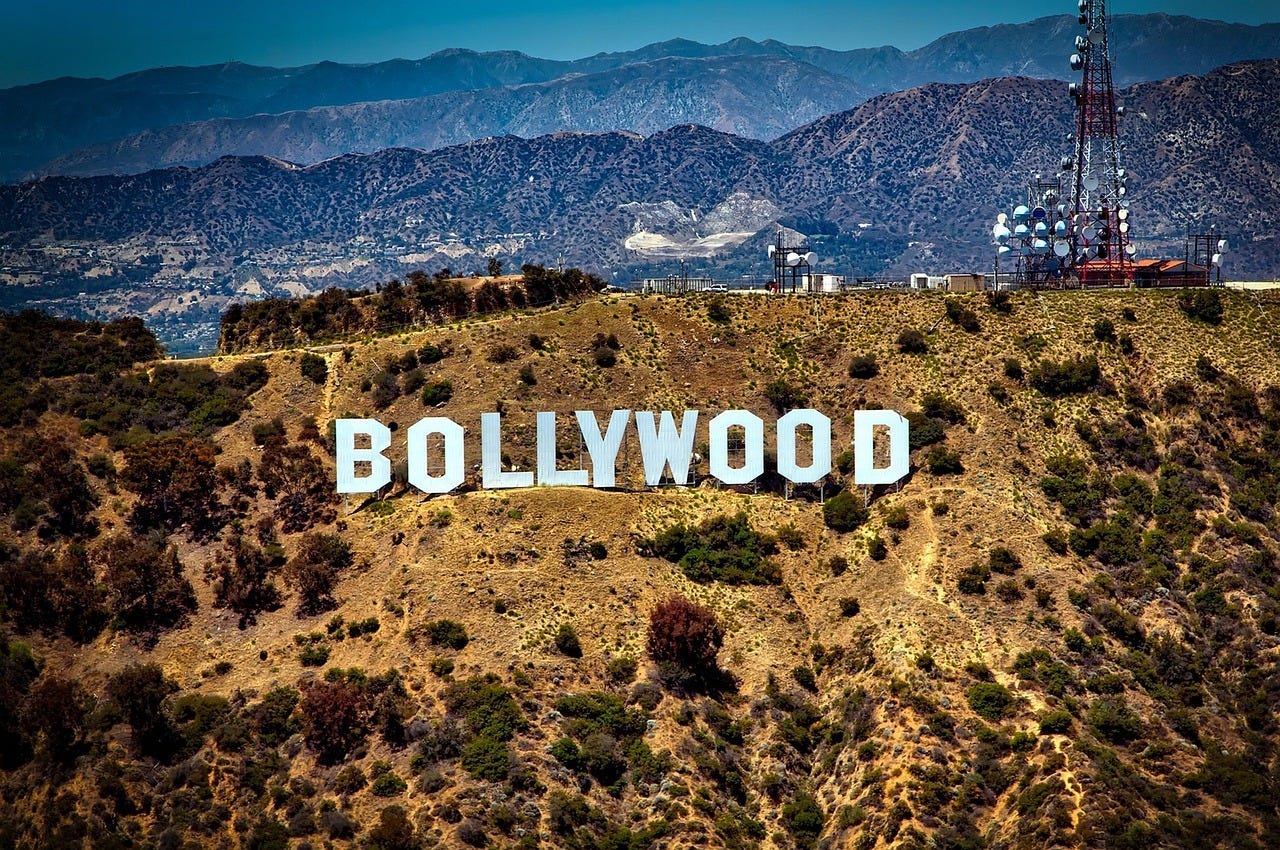The History of Bollywood Cinema
How the sparkling allure of this $3 billion industry rose with time
Welcome back to Popped! Exploring movie history and cinema culture from a DIY film student.
This week it is my pleasure to hand the reins over to . His Substack,
is a mix of culture, lifestyle, politics and personal perspectives of the world around him. More recently, Raj has started talking about movies and got in touch with me to see if he could write something for Popped!If you would like to listen to this post, there is a great voice over option, this week read aloud by Raj’s wife, Vee.
Without further ado…I will hand things over to Raj.
Bollywood finds its roots in 1913 when Dadasaheb Phalke's 90-minute magnum opus Raja Harishchandra1 released in the Coronation Cinematograph and Variety Hall of the culturally diverse village of Girgaon in Bombay (now Mumbai). It was the first full-length feature film to kick off a new era of movie storytelling. What was unique about this Marathi-language film was that all part, including female characters, were played by male actors during a time when it was considered inappropriate for women to work

According to a recent article commemorating 110 years of Bollywood cinema, Dadasaheb transformed Indian cinema by introducing new techniques such as double exposure, special effects, and music, proving that it was possible to create a new viable industry.
But it wasn't until the 1930s and the 40s that Bollywood started to emerge as a thriving industry, when Bombay's movie landscape became a sprawling canvas, extending from Grant Road in South Bombay to the suburb of Malad in the north. Movie studios, dotted from Tardeo to Dadar, became the home and work hubs for big studio heads, respected directors, and composers. Greener corners of the city became ideal filming locations by embracing the adaptive spirit of the city. Bollywood continually molded itself to handle the relentless urbanization that was swallowing the city, steering through skyrocketing real estate and constant change.
Then came the 70s and 80s with crowd-pleasing masala or mass movies, transforming Bollywood to the musical extravaganza that we know today. Families would sit through 3 to 4 hours of movie time to watch Bollywood legends like Amitabh Bachchan rise to God-like status. These heroes ruled the silver screen and soon became the heartthrobs for Bombayites.
In the 90s, as Bombay morphed into Mumbai, big corporations started getting into moviemaking, slowly making their mark as producers. With money being poured lavishly into Bollywood cinema, exotic locations like Switzerland became the preferred destinations for the new rising stars like Shah Rukh Khan and Salman Khan, who captured a global audience. Their movies mirrored India's social changes, with diverse stories spanning mythological tales, passionate romances, moving dramas, and resonant sociocultural commentaries.
Bollywood's appeal is its evocative and grand song-and-dance sequences, intricately woven into the narrative, serving as emotional conduits that go beyond language, eliciting universal feelings and fostering a cultural identity that resonates globally. Bolstered by growing globalization, Indian diaspora communities became conduits, spreading the Bollywood essence to distant corners. Its pulsating rhythms, kaleidoscopic visuals, emotive tales crossed borders, captivating hearts from the energetic US to the cultural mosaic of the Middle East to the nuanced tapestry of Southeast Asia.
Bollywood permeates daily life, shaping cultural norms and conversational language. Fashion trends sparked by Bollywood stars become prevalent styles, while iconic dialogues echo in casual talk, embedding cinema into everyday fabric.
Today, we have Bollywood actors headlining international brands and expanding their sphere of influence to Hollywood. Alia Bhatt, the face of Gucci, debuted in a 2023 Netflix movie with “Wonder Woman” Gal Gadot. Priyanka Chopra, who has made her Hollywood presence permanent, is a regular pick as the lead actor for American spy series. Actor Dhanush, South India’s youth icon, took his acting success worldwide by starring opposite Ryan Gosling in The Gray Man. The list goes on…
As Bollywood continues to evolve2, its legacy endures - both as a cultural vanguard and masterful storyteller. Like it's onscreen heroes who defy all odds, Bollywood cinema has stood the test of time, and continues to grow to towering new heights.









I did not know the history of Bollywood, found this article quite informative.
While I'm not an avid Bollywood film consumer, one thing I would credit them for is teaching me Hindi, alongside my Delhi-born husband. I can even formulate some sentences now, albeit shyly.
This is just great. I had no idea about the enormity and evolution of Bollywood, fantastic piece.